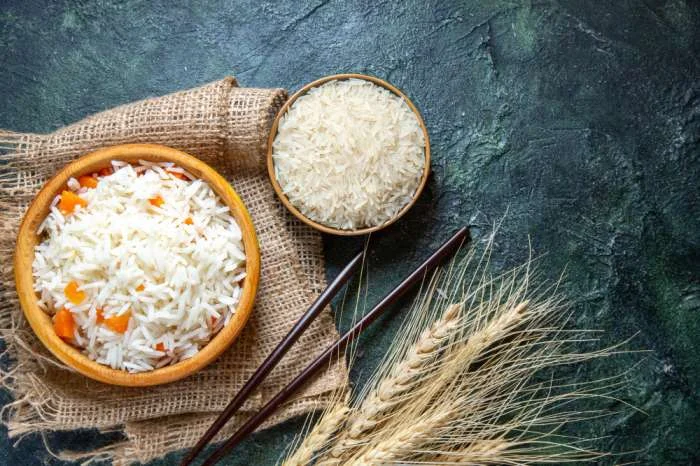Have you ever stood in your kitchen staring at a pot of rice, wondering why something so simple seems so tricky? I certainly have. In fact, I can still remember one evening during my student days when my “fluffy basmati rice” turned into a gluey mess so solid it could have been mistaken for wallpaper paste. That night, I promised myself I’d learn the real art of cooking rice. Over the years, with plenty of trial and error, tips from chefs, and advice from nutritionists, I’ve gathered the kind of practical know-how that transforms rice from an afterthought into the star of the meal.
This guide isn’t just a recipe—it’s a deep dive into the craft of rice cookery, blending personal experience with expert-backed insights. Whether you’re cooking basmati for a fragrant curry, jasmine for Thai dishes, or plain white rice for a quick weekday meal, you’ll walk away knowing why each method works, not just how to do it.
Why Rice Matters More Than You Think
Rice is more than just a side dish—it’s a staple for more than half of the world’s population. According to the Food and Agriculture Organization (FAO), rice provides over 20% of the world’s dietary energy supply. In countries such as Bangladesh and Cambodia, it makes up over 70% of daily calorie intake.
But beyond nutrition, rice has cultural weight. In Japan, rice is seen as a sacred food, while in parts of West Africa, jollof rice isn’t just a dish but a point of national pride. Cooking it well, therefore, isn’t just about filling your stomach—it’s about honouring centuries of tradition and culture.
The Science of Cooking Rice
One of the first lessons I learned from Chef Mariana López, a culinary instructor in Mexico City, was this: “Rice is all about water control.” At its core, cooking rice is a science of hydration. Starch granules in rice absorb water and swell, softening the grain. Too much water, and you’re left with mush. Too little, and you end up crunching half-cooked kernels.
A 2018 study published in the Journal of Food Science and Technology found that cooking temperature, water-to-rice ratio, and cooking vessel all directly influence rice texture. This is why recipes vary depending on whether you’re using a saucepan, rice cooker, or pressure cooker.
Choosing the Right Rice for the Dish
Long-Grain Rice (e.g., Basmati, Jasmine)
These grains stay separate when cooked and are perfect for pilafs, biryanis, and stir-fries. I’ve tested basmati both rinsed and unrinsed; rinsing clearly made a difference, washing away excess starch and preventing clumping.
Medium-Grain Rice (e.g., Arborio, Valencia)
Slightly shorter and starchier, making them ideal for risotto or paella. Here, creaminess is the goal.
Short-Grain Rice (e.g., Sushi Rice, Mochi Rice)
These are naturally sticky and used for sushi or rice puddings. I once skipped rinsing sushi rice, and the result was an overly sticky roll that fell apart. Lesson learnt: rinsing is non-negotiable.
Brown Rice
Retains the bran and germ, making it more nutritious but slower to cook. Dietitian Sarah Collins, RD, explains: “Brown rice has more fibre, magnesium, and antioxidants compared to white rice. It’s particularly beneficial for digestion and blood sugar control.”
How to Cook Rice: Tested Methods
1. The Absorption Method (Stovetop)
This is the classic method most home cooks swear by. After years of experimenting, I’ve found the golden ratio for most long-grain white rice is 1 cup rice : 1.5 cups water.
Steps:
- Rinse the rice under cold water until it runs clear.
- Place rice and water (plus a pinch of salt) in a pot.
- Bring to a boil, then immediately reduce to the lowest simmer.
- Cover with a tight lid and cook for 12–15 minutes.
- Remove from heat and let it sit, covered, for 10 minutes.
👉 Tip from my trials: lifting the lid mid-way ruins the steam balance, so resist the temptation.
2. The Pilaf Method
This is my go-to when I want rice with flavour. I learnt this technique from a Turkish home cook during a family exchange programme.
Steps:
- Heat oil or butter in a pan and lightly toast the rice until golden.
- Add spices (like cumin or cinnamon) for depth.
- Add broth instead of water for extra flavour.
- Cook using the same absorption method afterward.
3. The Boiling Method (Like Pasta)
Best for beginners because it’s forgiving.
Steps:
- Fill a large pot with water, add rice, and boil like pasta.
- Once cooked, drain and let steam dry.
I’ve used this when cooking large batches for fried rice—the grains turn out loose and non-sticky.
4. Rice Cooker / Instant Pot
Rice cookers take out the guesswork. The modern models I’ve tried adjust automatically to steam absorption. In Japan, rice cookers are seen as essential kitchen tools, not luxuries.
Common Mistakes and How to Avoid Them
- Not Rinsing: Skipping this leads to gummy rice. Rinse until water is clear.
- Wrong Water Ratio: Too much = mushy, too little = undercooked. Keep notes for your specific rice brand.
- Stirring Too Much: Stirring activates starch, creating clumps.
- Cooking on High Heat Throughout: This burns the bottom while leaving the top raw.
Health Considerations
Rice is sometimes criticised for its high glycaemic index (GI). But portion control and variety matter. Brown rice, wild rice, and even mixing lentils with rice (a staple in Indian khichdi) lowers the overall GI while boosting nutrition.
A Harvard School of Public Health report suggests swapping refined grains with whole grains at least half the time to improve heart health and digestion.
FAQs
Do I need to rinse rice before cooking?
Yes. Rinsing removes surface starch, improving texture and preventing clumping.
Can I cook rice without a lid?
You’ll struggle to trap steam without a lid, so the grains won’t cook evenly. If you must, use foil as a cover.
Why is my rice sticky?
Likely due to excess starch or too much water. Try rinsing thoroughly and reducing liquid slightly.
How do I reheat rice safely?
Cool leftovers quickly and refrigerate. When reheating, steam or microwave until piping hot. Never reheat rice more than once to avoid bacterial risk (Bacillus cereus).
Which rice is the healthiest?
Brown, red, or black rice generally contain more fibre and antioxidants compared to white rice.
Final Thoughts
Cooking rice isn’t just about getting it fluffy—it’s about respecting an ingredient that sustains billions of people worldwide. I’ve burnt it, undercooked it, and over-salted it, but each mistake taught me something new. Today, I treat rice with the same care as the main dish. When you get it right, it elevates even the simplest curry or stir-fry.
If you’ve got your own rice-cooking tricks or family traditions, I’d love to hear them. Do you add a squeeze of lemon to keep grains separate, or maybe a bay leaf for aroma? Share your tips in the comments—your experience might be just what another reader needs.
Read Also: Dijon Mustard vs Yellow Mustard: What’s the Real Difference and Which Should You Choose?

How to Cook Rice: A Complete Guide Backed by Experience and Expert Tips
Ingredients
1 cup long-grain white rice (e.g., basmati or jasmine)
1 ½ cups water
½ teaspoon salt (optional)
1 teaspoon butter or oil (optional)
Instructions
Rinse the rice under cold running water until the water runs clear. This removes excess starch and prevents stickiness.
In a medium saucepan, combine rice, water, salt, and butter/oil if using.
Bring to a gentle boil over medium heat.
Once boiling, reduce heat to the lowest simmer and cover tightly with a lid.
Cook for 12–15 minutes without lifting the lid.
Remove from heat and let the rice sit covered for 10 minutes to allow the steam to finish cooking the grains.
Fluff gently with a fork and serve.
Notes
Chef’s Tip
- For added aroma, drop a bay leaf or cardamom pod into the pot while cooking.
- Want even lighter rice? Add a teaspoon of lemon juice to the water before cooking.















